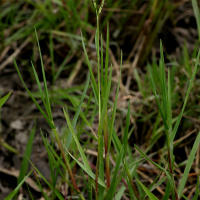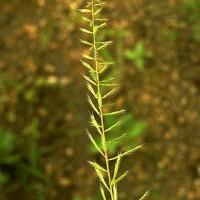Dinebra
Dinebra retroflexa
Dinebra retroflexa, also known as rough barnyardgrass, is an annual grass species belonging to the Poaceae family. It is considered a weed and is often found in disturbed areas, cultivated fields, gardens, and other open habitats. Here's a detailed description:
Botanical Description:
-
Habit:
- Rough barnyardgrass is an annual grass, meaning it completes its life cycle within one year.
-
Height:
- The plant typically grows to a height of about 20 to 80 centimeters (8 to 31 inches).
-
Leaves:
- The leaves are flat, linear, and may have a rough texture.
- Ligules (membranous structures where the leaf joins the stem) are absent or very short.
-
Inflorescence:
- The flowering structures are open panicles, with branches spreading outward.
-
Spikelets:
- Spikelets are small, awnless, and usually arranged in groups along the branches of the panicle.
-
Seed:
- The seeds are small, oval, and may have a rough texture.
Identification Tips:
-
Open Panicles:
- The open panicles with spreading branches are characteristic of rough barnyardgrass.
-
Linear Leaves:
- The linear leaves without ligules help distinguish it from some other grass species.
-
Seed Characteristics:
- Examining the small, rough-textured seeds can aid in identification.
Ecological Role:
- Habitat:
- Rough barnyardgrass is commonly found in disturbed areas, cultivated fields, gardens, and other open habitats.
Management and Control:
-
Cultural Practices:
- Crop rotation, proper irrigation practices, and maintaining healthy stands of desired vegetation can help suppress the growth of barnyardgrass.
-
Herbicides:
- Selective herbicides labeled for grass control in broadleaf crops may be used for effective control in agricultural settings.
-
Manual Removal:
- In smaller areas, hand-pulling or hoeing can be effective for control, especially if done before the plants produce seeds.
-
Preventive Measures:
- Implementing preventive measures, such as controlling seed sources and minimizing soil disturbance, can help prevent barnyardgrass infestations.










Produits phytosanitaires
- N/A
- N/A
- N/A
- N/A
- N/A
- N/A
- N/A
- N/A
- N/A
- N/A
- N/A
- N/A
- N/A
- N/A